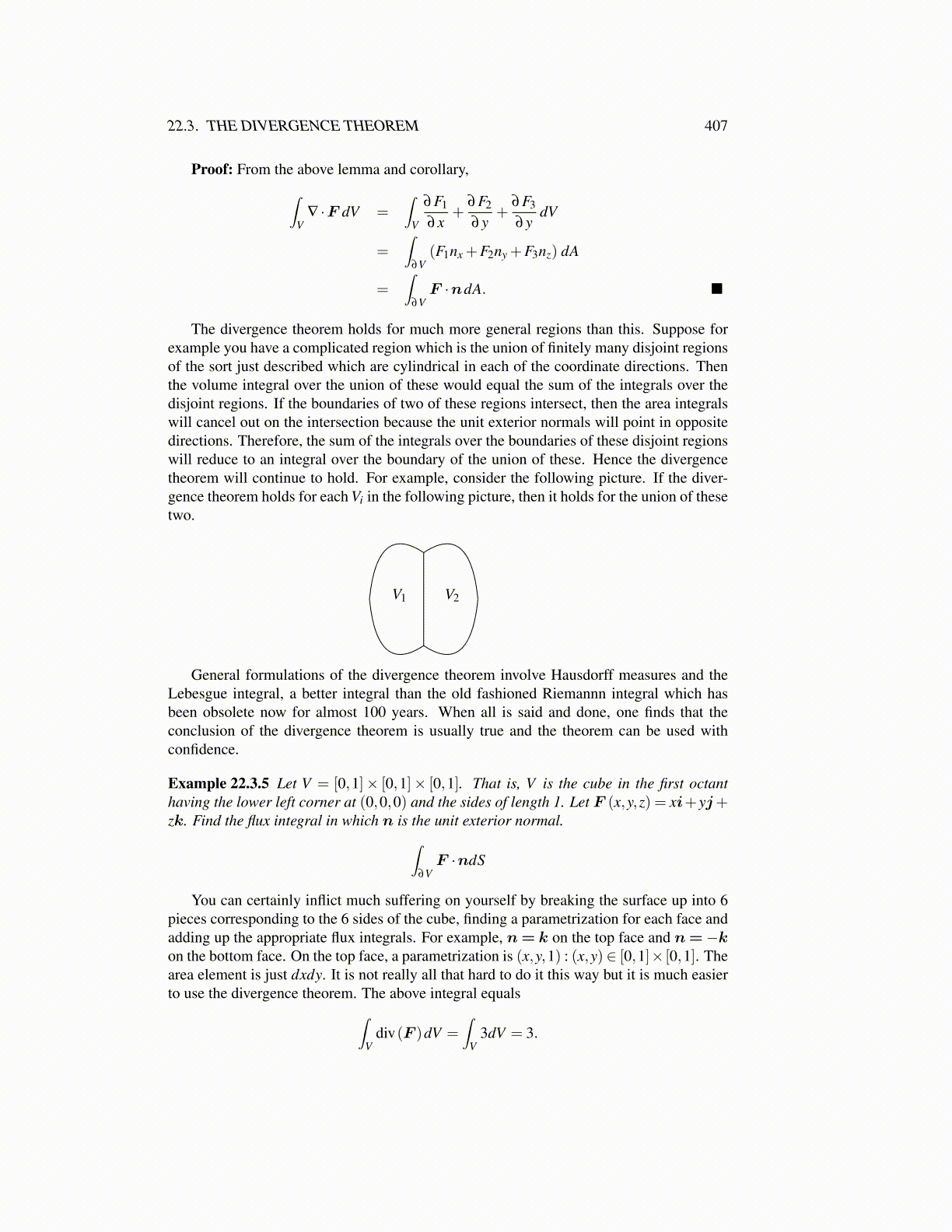
22.3. THE DIVERGENCE THEOREM 407
Proof: From the above lemma and corollary,∫V
∇ ·F dV =∫
V
∂F1
∂x+
∂F2
∂y+
∂F3
∂ydV
=∫
∂V(F1nx +F2ny +F3nz) dA
=∫
∂VF ·ndA. ■
The divergence theorem holds for much more general regions than this. Suppose forexample you have a complicated region which is the union of finitely many disjoint regionsof the sort just described which are cylindrical in each of the coordinate directions. Thenthe volume integral over the union of these would equal the sum of the integrals over thedisjoint regions. If the boundaries of two of these regions intersect, then the area integralswill cancel out on the intersection because the unit exterior normals will point in oppositedirections. Therefore, the sum of the integrals over the boundaries of these disjoint regionswill reduce to an integral over the boundary of the union of these. Hence the divergencetheorem will continue to hold. For example, consider the following picture. If the diver-gence theorem holds for each Vi in the following picture, then it holds for the union of thesetwo.
V1 V2
General formulations of the divergence theorem involve Hausdorff measures and theLebesgue integral, a better integral than the old fashioned Riemannn integral which hasbeen obsolete now for almost 100 years. When all is said and done, one finds that theconclusion of the divergence theorem is usually true and the theorem can be used withconfidence.
Example 22.3.5 Let V = [0,1]× [0,1]× [0,1]. That is, V is the cube in the first octanthaving the lower left corner at (0,0,0) and the sides of length 1. Let F (x,y,z) = xi+yj+zk. Find the flux integral in which n is the unit exterior normal.∫
∂VF ·ndS
You can certainly inflict much suffering on yourself by breaking the surface up into 6pieces corresponding to the 6 sides of the cube, finding a parametrization for each face andadding up the appropriate flux integrals. For example, n= k on the top face and n=−kon the bottom face. On the top face, a parametrization is (x,y,1) : (x,y)∈ [0,1]× [0,1]. Thearea element is just dxdy. It is not really all that hard to do it this way but it is much easierto use the divergence theorem. The above integral equals∫
Vdiv(F )dV =
∫V
3dV = 3.